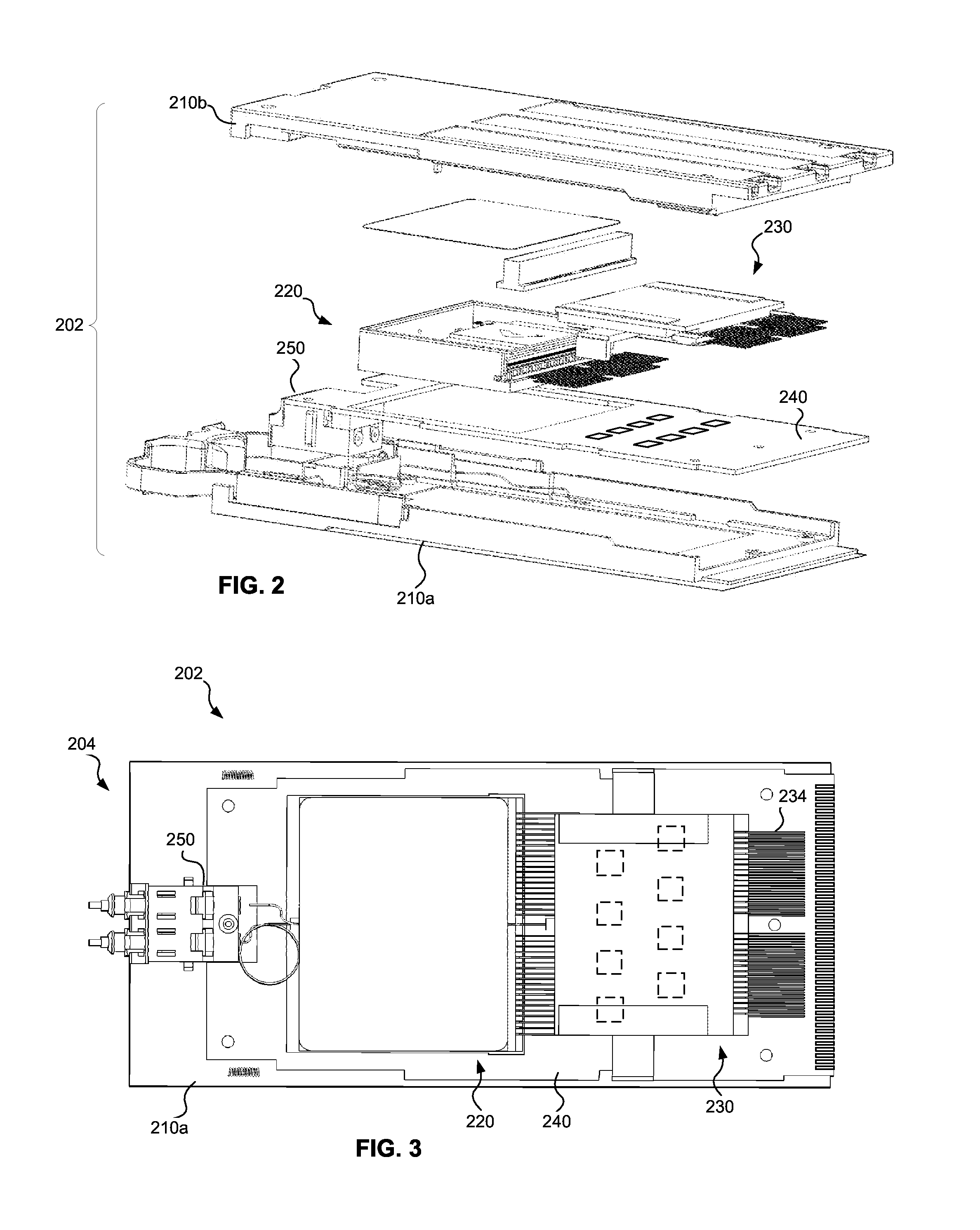Coupling of photodetector array to optical demultiplexer outputs with index matched material
a photodetector array and optical demultiplexer technology, applied in the field of optical transceivers, can solve the problems of increasing the complexity of deployment and managing many fibers, increasing the complexity of alignment procedures, and increasing the cost of operation
- Summary
- Abstract
- Description
- Claims
- Application Information
AI Technical Summary
Benefits of technology
Problems solved by technology
Method used
Image
Examples
Embodiment Construction
[0016]A multi-channel receiver optical subassembly (ROSA), consistent with embodiments described herein, includes an optical demultiplexer, such as an arrayed waveguide grating (AWG), with outputs optically coupled to respective photodetectors such as photodiodes. In one embodiment, the system may include an optical demultiplexer including multiple optical outputs corresponding to multiple signal channels and a photodetector array including a plurality of photodiodes aligned with the multiple optical outputs. The system may also include an epoxy, or other suitable material, to serve as a coupling medium, disposed within a gap between each of the photodiodes and each of the corresponding optical outputs of the optical demultiplexer. The epoxy may be configured to provide an index of refraction that is matched to the optical demultiplexer to improve optical coupling to the photodiodes.
[0017]A compact multi-channel optical transceiver may include the multi-channel ROSA, and the optical...
PUM
 Login to View More
Login to View More Abstract
Description
Claims
Application Information
 Login to View More
Login to View More - R&D
- Intellectual Property
- Life Sciences
- Materials
- Tech Scout
- Unparalleled Data Quality
- Higher Quality Content
- 60% Fewer Hallucinations
Browse by: Latest US Patents, China's latest patents, Technical Efficacy Thesaurus, Application Domain, Technology Topic, Popular Technical Reports.
© 2025 PatSnap. All rights reserved.Legal|Privacy policy|Modern Slavery Act Transparency Statement|Sitemap|About US| Contact US: help@patsnap.com



